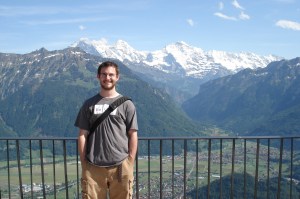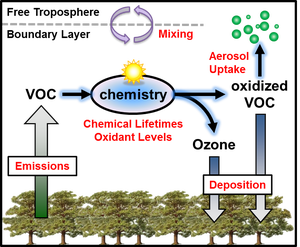First article of a series featuring Early Career Scientists

Author: Glenn M. Wolfe
Introduced by IO3C Member: Paul A. Newman
Glenn Wolfe has invested more than a decade building an observationally-grounded understanding of how natural and anthropogenic activities synergistically influence atmospheric composition and ozone. He earned a B. A. in Chemistry from Johns Hopkins in 2004 and a Ph.D. in Atmospheric Chemistry from the University of Washington in 2010. His dissertation included trans-Pacific pollution transport and exchange of reactive nitrogen within forest canopies. From this work, Glenn acquired an appreciation for the nuts-and-bolts of instrument development, the challenges and rewards of field deployment, and the wider perspective afforded by model-assisted data synthesis. As a NOAA Climate and Global Change Postdoctoral Fellow at the University of Wisconsin, he studied biogenic hydrocarbon oxidation through a combination of laboratory and modeling investigations and deployed instrumentation on a Zeppelin as part of the European-led PEGASOS mission. In October 2012 he accepted a position as a Research Scientist at NASA Goddard Space Flight Center and University of Maryland Baltimore County’s Joint Center for Earth Systems Technology. At NASA, Glenn continues to seek new insights into atmospheric chemistry and surface-atmosphere interactions. Forming the core of his work are airborne in situ observations in two key flavors: formaldehyde and fluxes.
Formaldehyde (HCHO), a ubiquitous byproduct of hydrocarbon degradation, is a major source of radicals and a marker for the oxidative processes that control the abundance of air quality and climate-relevant gases like ozone and methane. Along with other members of his team, Glenn has acquired HCHO observations on NASA, NSF and NOAA missions, including (most recently) NASA’s Atmospheric Tomography (ATom) Mission. The science from these measurements has advanced our understanding of atmospheric processes, including emissions, oxidation, and convection. He has used observations from the NOAA Southeast Nexus (SENEX) study to quantify the relationship between HCHO and its primary terrestrial precursor, isoprene. This work underpins ongoing efforts to estimate isoprene emissions from space-based HCHO column retrievals, and thereby constrain our regional modeling of ozone.
Glenn also studies atmospheric processes through direct measurements of vertical fluxes on low-flying aircraft. These observations are the next step in composition research, extending our capabilities from merely quantifying the state of the atmosphere (i.e. concentrations) to actually quantifying the underlying processes (emissions, deposition/uptake, chemical transformations). Airborne flux observations can directly test models and high-level satellite products. Using observations from NASA’s Studies of Emissions, Atmospheric Composition, Clouds and Climate Coupling by Regional Surveys mission, Glenn derived the first-ever flux measurements from NASA’s DC-8 and demonstrated their application towards quantification of emissions, deposition, chemical lifetimes, and aerosol uptake efficiencies over a Southeast US forest. More recently, he has been central to NASA’s nascent Carbon Airborne Flux Experiment (CARAFE), which has quantified greenhouse gas exchange. In the future, Glenn foresees combining reactive and greenhouse gas fluxes with remotely-sensed surface properties (e.g. vegetation health) to develop a comprehensive portrait of biosphere-atmosphere interactions.
Glenn also provides a valuable service to the atmospheric chemistry community by developing and maintaining the Framework for 0-D Atmospheric Modeling (F0AM), a flexible and user-friendly chemical box model. To date, F0AM has supported 23 publications and is used by at least a dozen research groups.
As of March 2018, Glenn has co-authored 65 peer-reviewed publications. When not in the lab or the field, Glenn’s hobbies including amateur carpentry, guitar, scotch appreciation, hiking, and construction of sprawling wooden train tracks with his two sons.


